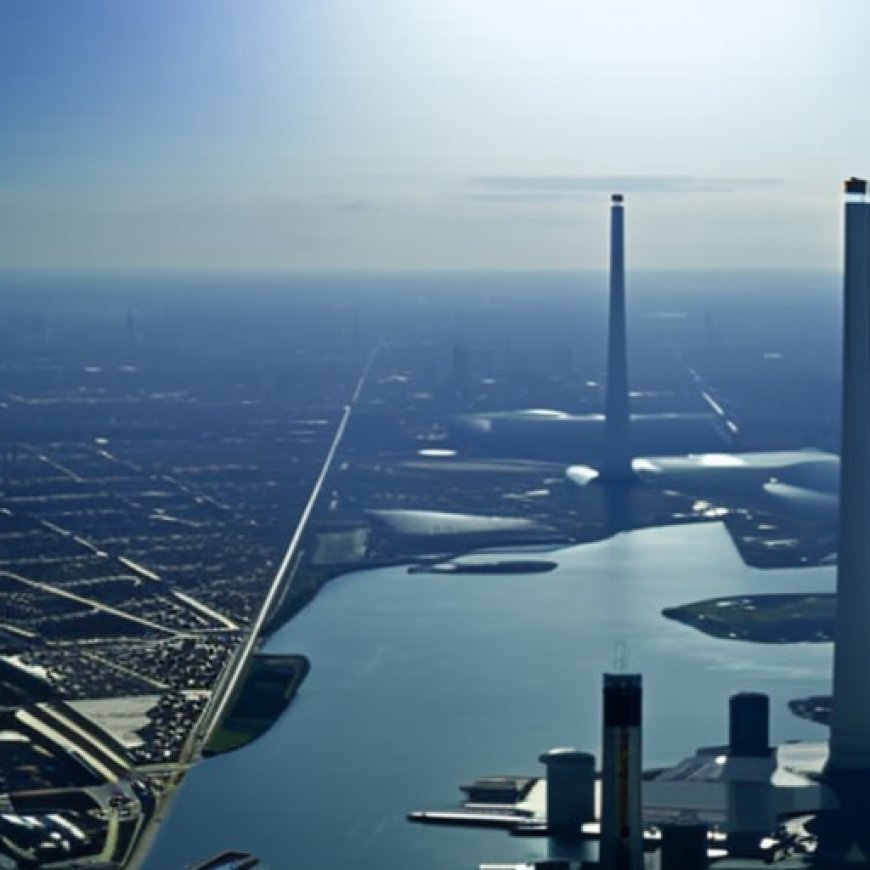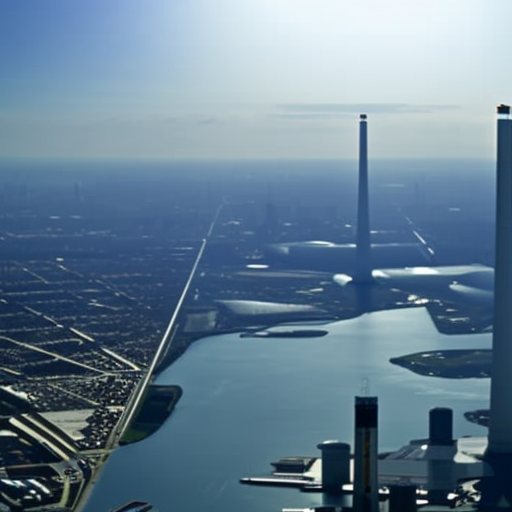National Clean Air Programme: All you need to know
National Clean Air Programme: All you need to know The Hindu


The story so far:
When the Indian government launched the National Clean Air Programme (NCAP) in 2019, it was to cut the concentration of atmospheric Particulate Matter (PM) by 20-30% by 2024, from 2017 levels. This was later revised to 40% by 2026.
What is the NCAP?
Under NCAP, cities continuously violating annual PM levels in India need to prepare and implement annual Clean Air Action Plans (CAAPs). To facilitate this, the Ministry of Environment, Forest, and Climate Change has allocated ₹10,422.73 crore. Most cities proactively submitted their CAAPs yet their implementation has been inconsistent. On average, only 60% of the allocated funds have been used thus far, according to the Ministry, with 27% of cities spending less than 30% of their designated budgets. Visakhapatnam and Bengaluru have spent 0% and 1% of their NCAP funds, respectively. Implementation delays hinder NCAP’s success, particularly delays in approvals from the competent authorities (for example, the technical specification of tendering processes or for procuring products such as mechanical sweepers and electric buses).
How can scientific tools help?
EI and SA studies are critical to identify and understand the origins of pollution. EIs provide insights into local pollution sources and their contributions, allowing experts to forecast future emissions based on demographic shifts and technological advancements across sectors, among other factors. EIs also help shape targeted pollution control strategies. They have their limitations, too, particularly in assessing the impact of transboundary pollution sources — such as when determining the effect of stubble-burning outside Delhi on the city’s air quality.
SA studies offer a detailed analysis of contributions from various pollution sources, including those located afar. However, they aren’t suited for predictive analysis and require substantial resources, including specialised personnel and equipment for chemical analysis. SA studies also can’t distinguish between the origins of pollution, like, say, emissions from diesel trucks 200 m away and 20 km away, because diesel emissions have similar chemical signatures.
These gaps can be bridged through AQ modelling, which informs our understanding of pollution dispersion, including from distant sources.
How are these being used?
Ideally, the cities should look into EI and SA data to pinpoint air pollutants and prepare mitigation measures targeting each polluting activity. According to the Portal for Regulation of Air-pollution in Non-Attainment cities, only 37% of cities have completed EI and SA studies, meaning the remaining 63% don’t have a clear idea about what is polluting their air. Thus, the effectiveness of CAAPs is questioned if the cities don’t know the individual emissions reduction potentials of their proposed mitigation measures. Based on the potential and infrastructure requirements, cities need to set proper yearly targets and fund them.
Moreover, the NCAP’s reliance on concentration data — a measure of population exposure to harmful pollution — further complicates the situation. Pollution from high-emitting industries and other sources outside city limits, carried into urban areas by winds complicates urban air-quality management. Many existing control measures focus only on primary PM emissions, neglecting their secondary precursors. A shift towards comprehensive strategies addressing both primary and secondary pollutants is thus important. Further, although one of the NCAP goals is to set up infrastructure to forecast AQ, no city barring Delhi, Pune, Mumbai, and Ahmedabad has a decision-support system.
What does NCAP need to succeed?
Beyond the need for data and models, swift implementation on the ground is essential. For this, implementation agencies should seek to reduce bureaucratic red tape by utilising shared, standardised technical evaluations. As NCAP funding is linked with the performance of cities (based on the annual average PM concentration reduction), prior budgeting and time management play crucial roles. Technical feasibility, budgeting, and time estimates need to be part of the initial plans.
The journey towards cleaner air in India, as charted by NCAP, will be difficult but is necessary. NCAP’s success hinges on a multifaceted approach that combines rigorous scientific studies, strategic funds, and swift and effective implementation of mitigation measures.
The author works in Air Quality at Center for Study of Science, Technology and Policy.
SDGs, Targets, and Indicators Analysis
1. Which SDGs are addressed or connected to the issues highlighted in the article?
- SDG 3: Good Health and Well-being
- SDG 11: Sustainable Cities and Communities
- SDG 13: Climate Action
The article discusses the National Clean Air Programme (NCAP) in India, which aims to improve air quality and reduce atmospheric particulate matter (PM) concentration. This directly relates to SDG 3, as air pollution has significant health impacts. It also connects to SDG 11, as the NCAP focuses on cities and their clean air action plans. Additionally, it is relevant to SDG 13, as reducing air pollution contributes to climate action.
2. What specific targets under those SDGs can be identified based on the article’s content?
- SDG 3.9: By 2030, substantially reduce the number of deaths and illnesses from hazardous chemicals and air, water, and soil pollution and contamination.
- SDG 11.6: By 2030, reduce the adverse per capita environmental impact of cities, including by paying special attention to air quality and municipal and other waste management.
- SDG 13.2: Integrate climate change measures into national policies, strategies, and planning.
The article highlights the need to reduce air pollution and improve air quality, which aligns with SDG 3.9. It also emphasizes the importance of addressing air quality in cities, which corresponds to SDG 11.6. Furthermore, the article mentions the National Clean Air Programme as a climate change mitigation measure, linking it to SDG 13.2.
3. Are there any indicators mentioned or implied in the article that can be used to measure progress towards the identified targets?
- Concentration of atmospheric Particulate Matter (PM)
- Percentage of cities completing Emissions Inventory (EI) and Source Apportionment (SA) studies
- Percentage reduction in annual average PM concentration
The article mentions the concentration of atmospheric Particulate Matter (PM) as a key measure of air pollution. It also highlights the completion of Emissions Inventory (EI) and Source Apportionment (SA) studies as indicators of progress in understanding pollution sources. Additionally, the percentage reduction in annual average PM concentration is mentioned as a performance metric for cities under the National Clean Air Programme.
Table: SDGs, Targets, and Indicators
| SDGs | Targets | Indicators |
|---|---|---|
| SDG 3: Good Health and Well-being | 3.9: By 2030, substantially reduce the number of deaths and illnesses from hazardous chemicals and air, water, and soil pollution and contamination. | – Concentration of atmospheric Particulate Matter (PM) |
| SDG 11: Sustainable Cities and Communities | 11.6: By 2030, reduce the adverse per capita environmental impact of cities, including by paying special attention to air quality and municipal and other waste management. | – Percentage of cities completing Emissions Inventory (EI) and Source Apportionment (SA) studies |
| SDG 13: Climate Action | 13.2: Integrate climate change measures into national policies, strategies, and planning. | – Percentage reduction in annual average PM concentration |
Behold! This splendid article springs forth from the wellspring of knowledge, shaped by a wondrous proprietary AI technology that delved into a vast ocean of data, illuminating the path towards the Sustainable Development Goals. Remember that all rights are reserved by SDG Investors LLC, empowering us to champion progress together.
Source: thehindu.com

Join us, as fellow seekers of change, on a transformative journey at https://sdgtalks.ai/welcome, where you can become a member and actively contribute to shaping a brighter future.







